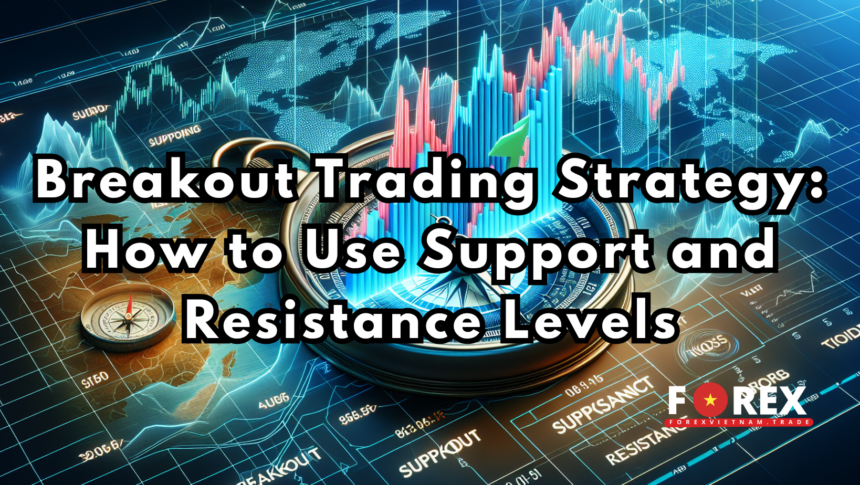Breakout trading is a popular strategy among Forex traders, as it allows you to take advantage of significant market movements when prices break through key levels. Two essential elements in this strategy are support and resistance levels. In this article, we will discuss how to effectively use these levels to enhance your breakout trading strategy and improve your chances of success in the Forex market.
1. What is a Breakout in Forex Trading?
A breakout occurs when the price of a currency pair moves beyond a significant support or resistance level with strong momentum. When this happens, it signals a potential shift in market direction, offering traders the opportunity to enter the market at the beginning of a new trend. Breakouts can lead to large price movements, making them attractive for traders looking to capitalize on volatility.
2. Understanding Support and Resistance Levels
- Support Level: This is the price level at which a currency pair tends to stop falling and bounce back up. It acts as a floor for the price.
- Resistance Level: This is the price level at which a currency pair tends to stop rising and may reverse downward. It acts as a ceiling for the price.
These levels are crucial in breakout trading because they indicate potential points of market reversal or continuation. Traders use these levels to determine entry and exit points for their trades.
3. Identifying Key Support and Resistance Levels
To successfully trade breakouts, you first need to identify the key support and resistance levels on the price chart. This can be done through several methods:
- Historical Price Data: Look for previous price levels where the market has reversed or stalled. These levels can serve as future support or resistance points.
- Trendlines: Draw trendlines connecting the highs or lows of the price chart. These trendlines often act as dynamic support and resistance levels.
- Technical Indicators: Use indicators like Moving Averages, Fibonacci Retracement, or Pivot Points to help identify potential support and resistance zones.
Once you have identified these levels, you can prepare for a potential breakout when the price approaches them.
4. Types of Breakouts: Continuation vs. Reversal
There are two main types of breakouts you should be aware of:
- Continuation Breakout: This happens when the price breaks through a resistance level in the direction of an existing trend, signaling a continuation of the trend.
- Reversal Breakout: This occurs when the price breaks through a support or resistance level, signaling a reversal in the current trend. Reversal breakouts can be more unpredictable, but they offer lucrative opportunities if correctly identified.
Knowing the type of breakout you are dealing with will help you determine the best trading strategy.
5. Breakout Entry and Exit Strategies
To trade a breakout successfully, it’s essential to know when to enter and exit a trade. Below are some strategies for breakout entries and exits:
Entry Points:
- Wait for Confirmation: A common mistake traders make is entering a trade too early, before a true breakout occurs. Wait for a candle to close above resistance or below support to confirm the breakout.
- Volume Confirmation: An increase in trading volume during a breakout indicates strong market momentum, making the breakout more likely to succeed.
Exit Points:
- Setting Stop-Loss Orders: Place your stop-loss order just below the breakout level for long trades (buying) or above the breakout level for short trades (selling). This helps minimize losses if the breakout turns out to be false.
- Take-Profit Targets: Set your take-profit target based on previous price movements or using technical tools like the Fibonacci extension. Many traders aim for a risk-to-reward ratio of at least 1:2.
6. Managing False Breakouts
One of the biggest challenges in breakout trading is dealing with false breakouts. A false breakout occurs when the price temporarily breaks through a support or resistance level but quickly reverses direction. To avoid being caught in a false breakout:
- Use Tight Stop-Losses: Set a tight stop-loss order to exit the trade quickly if the breakout fails.
- Wait for Retests: Sometimes, the price will break out and then retest the broken level. If the level holds after the retest, it’s a good sign that the breakout is valid.
- Monitor Volume: Low volume during a breakout often signals a false breakout. Always look for strong volume to confirm the move.
7. The Role of Market Sentiment in Breakouts
Market sentiment plays a significant role in the success of breakout strategies. Positive news or economic data can fuel a breakout by increasing buying or selling pressure. Pay attention to news events, central bank announcements, and economic reports that can trigger large price movements and breakouts.
Breakout trading using support and resistance levels is a powerful strategy that can lead to significant profits if executed correctly. By identifying key levels, waiting for confirmation, and managing your trades with proper risk management, you can increase your chances of success in the Forex market. Keep in mind the possibility of false breakouts and always stay informed about market sentiment to make informed trading decisions.







